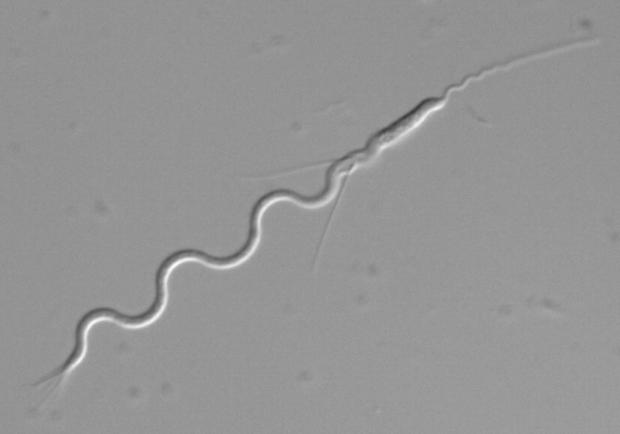When that happens, sperm war breaks out.
"The sperm of the different males then compete within the female to fertilize the eggs," says evolutionary biologist Steven Ramm from Bielefeld University. "Generally speaking, the best sperm wins. This may involve its speed or also be due to the amount of sperm transferred. It can also be useful for the seminal fluid to be viscous, meaning it sticks inside the female reproductive tract to try to keep other sperm at bay."

Sperm come in all shapes and sizes: the sperm cell of the flatworm “Macrostomum lignano” (picture) has a frontal “feeler” (right) and two lateral bristles that may function to anchor the sperm inside the female sperm-receiving organ. Credit: Bielefeld University
When the sperm of one male compete with those of another, the sperm cells they produce need to be well adapted to this ‘fight over the egg’. Sperm are considered to be the most diverse type of cell in the entire animal kingdom. In a recent paper, researchers describe how different sperm cells are formed in for example flies, roundworms, and vertebrates. They also show that it is not just the amount of sperm that is important, but also its form.
"Even just the size of the individual sperm cell may provide a competitive advantage," says Ramm. Alongside human sperm that are tiny and swim with their tails, there are, for example, spherical and crawling sperm or even giant sperm that are larger than the male that produces them.
Evolutionary biologists study how living creatures have developed over millions of years. They focus on asking how they are adapted to their environment. "The main concern in our special issue is to try to understand why reproduction in animals happens in the way that it does," says Ramm. "In the long term, this knowledge could, for example, help reproductive biologists to modify sperm genetically to increase the chance of fertilization. One possible application of such methods could be to help conserve endangered species."
Citation: Steven A. Ramm, Lukas Schärer, Jens Ehmcke, Joachim Wistuba, 'Sperm competition and the evolution of spermatogenesis', Molecular Human Reproduction, 16 October 2014 .doi.org/10.1093/molehr/gau076. Source: Bielefeld University






Comments